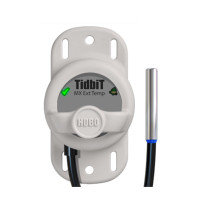If you are looking for a thermometer or hygrometer for your garden or grow room, you are in the right place. Here at Hydrobuilder, we carry all the products you need to keep your temperature and humidity dialed in. We want to help you grow the biggest, best plants possible.
What is a grow room thermometer?
A grow room thermometer is a device used to measure the temperature inside a grow room or greenhouse, where plants are grown. It is an essential tool for monitoring the temperature and maintaining a suitable growing environment for plants.
Indoor thermometers typically come in two forms: digital and analog. Digital thermometers use electronic sensors to measure temperature and display the readings on a digital screen. On the other hand, analog thermometers have a thermometer bulb and a gauge to display the temperature.
The temperature inside a grow room can have a significant impact on the growth and health of plants. Some plants require specific temperature ranges to thrive. Fluctuations in temperature can cause stress to the plants, leading to stunted growth or disease.
In addition to measuring temperature, some grow room thermometers also measure humidity levels, which can also impact the growth and health of plants. High humidity levels can create a hospitable environment for mold and other pests. While on the other hand, low humidity levels can cause the plants to dry out.
What is a hygrometer and how does it work?
A hygrometer measures the relative humidity of the air. Relative humidity is a measure of the amount of moisture in the air. It is compared to the maximum amount of moisture the air can hold at a given temperature. Having an accurate humidity reading is crucial in any growing situation.
A hygrometer typically works by using a sensor to measure the moisture in the air. It then uses that information to calculate and determine humidity. Digital hygrometers use sensors such as capacitive or resistive sensors to measure the moisture in the air and calculate the relative humidity. These instruments are commonly used in weather stations, greenhouses, and other environments where it is important to monitor the moisture content of the air.
Why use a humidity meter in the grow room?
Relative humidity affects the water balance of the plants. Maintaining the correct humidity level can help prevent issues such as wilting, stunted growth, or disease. For example, high humidity levels can create a hospitable environment for mold and other pests. On the other hand, low humidity levels can cause the plants to dry out and become stressed.
Knowing the humidity levels in your grow room also helps you determine the proper amount of water to give your plants. Too much or too little water can also have negative effects on growth.
A hygrometer is an easy and inexpensive tool. It can help you keep track of the humidity levels in your grow room. It helps you make adjustments as necessary to maintain a healthy growing environment.
In addition, some hygrometers also display temperature readings. This can help you ensure that the temperature in your grow room is within the optimal range for your plants.
Types of hygrometers
There are several different types of hygrometers that can be used to measure relative humidity. Some of the most common types include:
Analog hygrometers: These have a thermometer bulb and a gauge to display the relative humidity level. They are simple to use and relatively inexpensive, but may not be as accurate as other types of hygrometers.
Digital hygrometers: Digital hygrometers use electronic sensors to measure relative humidity and display the readings on a digital screen. They are more accurate than analog hygrometers, and some models can also display temperature readings.
Psychrometric hygrometers: Also called dew point hygrometers, these use temperature, pressure, and relative humidity readings to calculate specific humidity, dew point, and other parameters. They are commonly used in industries such as HVAC, agriculture, and meteorology.
Capacitive hygrometers: These use a ceramic material that changes its electrical capacitance in response to changes in relative humidity. They are highly accurate but can be more expensive than other types of hygrometers
Optical hygrometers: Optical hygrometers use lasers to measure the refractive index of air, which is directly proportional to relative humidity. They are highly accurate, but can be expensive and complex to use.









